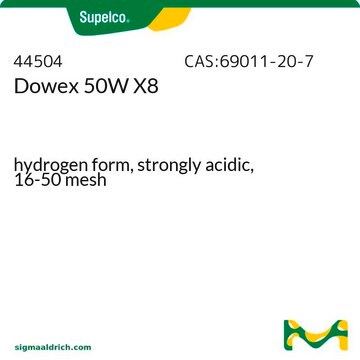240117
1,6-Hexanediol
99%
Synonyme(s) :
Hexamethylene glycol
About This Item
Produits recommandés
Pression de vapeur
0.53 mmHg ( 20 °C)
Niveau de qualité
Essai
99%
Température d'inflammation spontanée
608 °F
Limite d'explosivité
16 %
pb
250 °C (lit.)
Pf
38-42 °C (lit.)
Chaîne SMILES
OCCCCCCO
InChI
1S/C6H14O2/c7-5-3-1-2-4-6-8/h7-8H,1-6H2
Clé InChI
XXMIOPMDWAUFGU-UHFFFAOYSA-N
Vous recherchez des produits similaires ? Visite Guide de comparaison des produits
Catégories apparentées
Description générale
Application
- a structure-directing agent for the synthesis of ZSM-5 zeolite
- a solvent for titanium tetra-isopropoxide to form titanium oxide (TiO2) nanocrystals
- a phase change material in combination with lauric acid for thermal energy storage applications
Code de la classe de stockage
11 - Combustible Solids
Classe de danger pour l'eau (WGK)
WGK 1
Point d'éclair (°F)
215.6 °F - closed cup
Point d'éclair (°C)
102 °C - closed cup
Équipement de protection individuelle
Eyeshields, Gloves, type N95 (US)
Faites votre choix parmi les versions les plus récentes :
Déjà en possession de ce produit ?
Retrouvez la documentation relative aux produits que vous avez récemment achetés dans la Bibliothèque de documents.
Les clients ont également consulté
Global Trade Item Number
| Référence | GTIN |
|---|---|
| 240117-50G | 4061838787675 |
Notre équipe de scientifiques dispose d'une expérience dans tous les secteurs de la recherche, notamment en sciences de la vie, science des matériaux, synthèse chimique, chromatographie, analyse et dans de nombreux autres domaines..
Contacter notre Service technique











